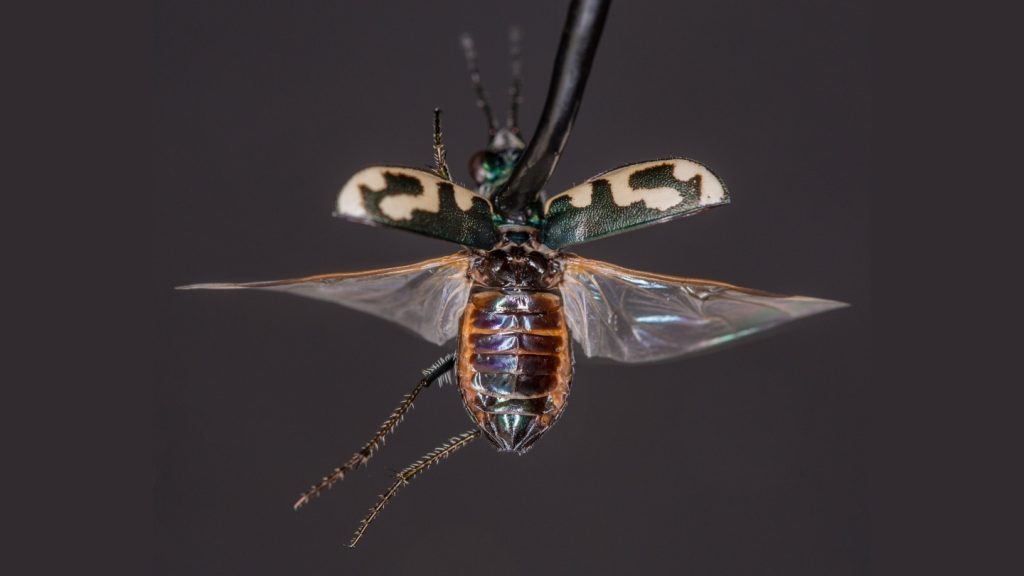Researchers have discovered that some tiger beetles respond to approaching echolocating bats with high-pitched clicks that mimic the noises of toxic moths. These sound-based mimicry tactics may be widespread among night-flying insects, with at least seven major insect groups having ears sensitive to bat echolocation pitches. Some moths have developed strategies such as sound-absorbent wings or genital trills to evade bats, and the tiger beetles with their clicks add to this acoustic warfare between predators and prey.
The researchers collected tiger beetles from southern Arizona and observed that when the insects heard a bat clicking sequence, they responded by pulling their forewings into the path of their hindwings to produce high-pitched clicks. By mimicking the auditory warnings of toxic moths, the tiger beetles may be deterring bats from pursuing them. The clicking noises closely resembled those produced by nearby tiger moths, suggesting that the beetles are using acoustic mimicry to evade predation despite not being chemically defended against bats.
This discovery sheds light on animal warning communication that extends beyond visual signals to include sound-based defenses. The ability of insect species like tiger beetles to use ultrasonic clicking as an anti-bat strategy showcases the diverse tactics that have evolved in the nocturnal world. Further research is needed to confirm the mimicry hypothesis and explore the prevalence of such defensive mechanisms among other insect orders. Understanding this acoustic warfare may provide insights into the evolution of anti-predator strategies in the night sky.
The study highlights the importance of considering warning signals based on sound and smell, especially in species with undetectable signals to human senses. The interactions between predators and prey in the acoustically intense nocturnal environment reveal a complex ecosystem of defensive strategies. Evolutionary ecologists are intrigued by the potential for widespread ultrasonic clicking in tiger beetles and its comparison to the evolutionary origins of echolocating bats millions of years ago, offering opportunities to explore the dynamics of predator-prey interactions in the animal kingdom.
Overall, the discovery of tiger beetles mimicking toxic moth sounds in response to bat attacks provides a unique and fascinating glimpse into the intricate mechanisms of predator avoidance in the animal kingdom. The use of acoustic mimicry as a defense strategy underscores the importance of understanding the diverse ways in which animals communicate and protect themselves in their natural habitats. Further research in this field could uncover more instances of acoustic mimicry and shed light on the evolutionary history of these fascinating anti-predator tactics among insects.


